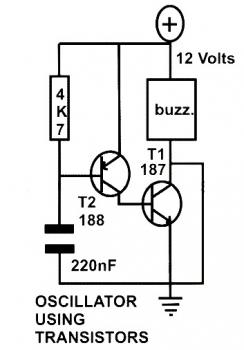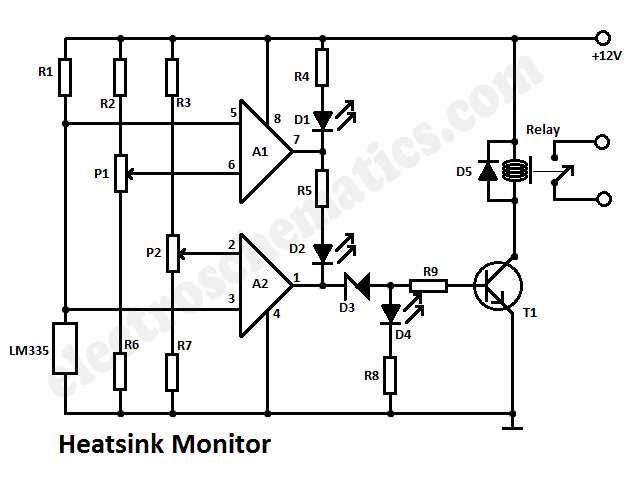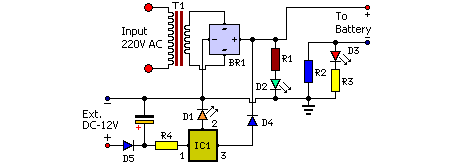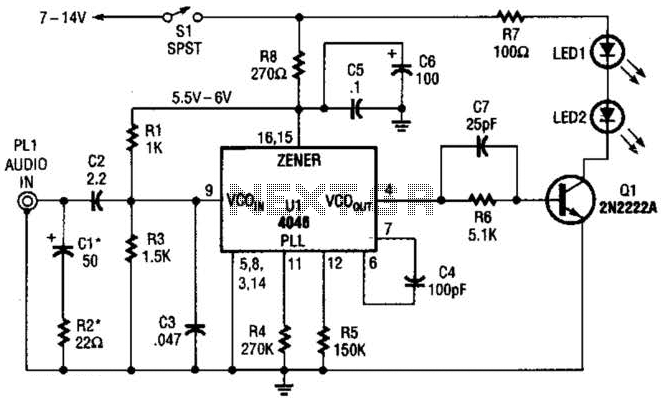
XTR101 thermocouple input circuit diagram
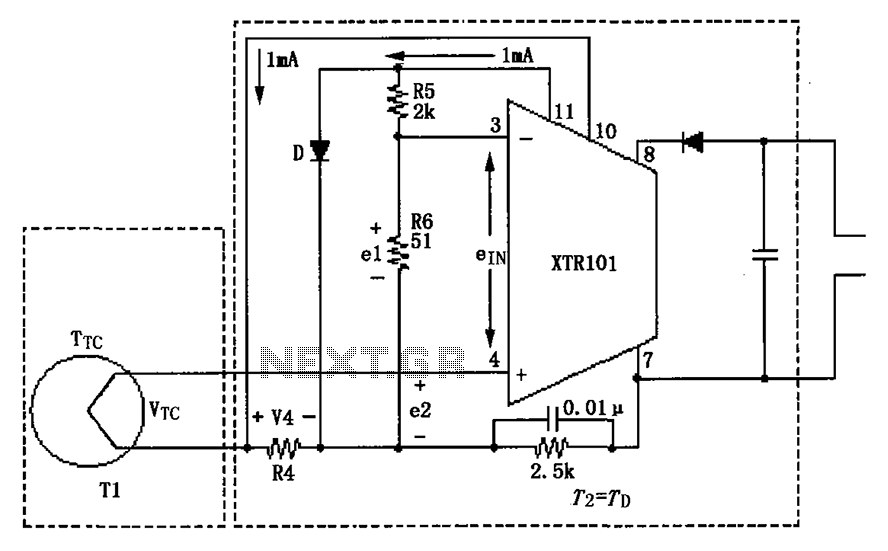
The circuit illustrated in the figure features two temperature zones and incorporates a thermocouple cold-junction compensation diode input circuit. It utilizes a J-type thermocouple as the temperature sensor. A semiconductor diode (D) is configured to provide cold junction compensation for measurements at 0°C, while measuring temperature T1 within the range of 0 to 1000°C. Temperature T2 corresponds to the temperature of the semiconductor diode D (TD). As the temperature varies from 0 to 1000°C, the J-type thermocouple generates a change of 58 mV. At an ambient temperature of +25°C, the typical output value is 1.28 mV. The current output at 0°C is 4 mA, which increases to 20 mA at 1000°C.
The circuit operates effectively by employing a J-type thermocouple, which consists of two different metal wires joined at one end. This junction generates a voltage proportional to the temperature difference between the hot junction (where the temperature is measured) and the cold junction (where the compensation is applied). The cold junction compensation is crucial for accurate temperature readings, especially in environments where ambient temperature can fluctuate.
The semiconductor diode (D) serves as a reference point for the cold junction temperature. By maintaining the diode at a known temperature, the system can accurately adjust the output signal from the thermocouple. The voltage output from the thermocouple is linear within the specified temperature range, allowing for straightforward conversion to a corresponding current signal, which is typically used in industrial applications.
The output current varies with temperature, with 4 mA representing 0°C and scaling up to 20 mA at 1000°C. This current output can be utilized in various control systems or monitoring equipment, facilitating the integration of temperature measurements into broader electronic systems. The design ensures that the thermocouple's output is both reliable and precise, making it suitable for applications requiring high accuracy in temperature sensing. As shown in Fig having two temperature zones and thermocouple cold-junction compensation diode input circuit. This circuit uses the J-type thermocouple as a temperature sensor, a semiconductor diode D is formed as a relatively cold junction compensation 0oC measurements, measuring temperature, T1 in the range of 0 ~ 1000oC. Temperature T2 is equal to the temperature of the semiconductor diode D TD. When measuring the temperature at 0 ~ 1000oC change, J-type thermocouple will have 58mV change. At an ambient temperature of + 25, the typical value 1.28mV. Corresponding to 0oC transmission current 4mA, corresponding to the current transmission + 1000oC is 20mA.
The circuit operates effectively by employing a J-type thermocouple, which consists of two different metal wires joined at one end. This junction generates a voltage proportional to the temperature difference between the hot junction (where the temperature is measured) and the cold junction (where the compensation is applied). The cold junction compensation is crucial for accurate temperature readings, especially in environments where ambient temperature can fluctuate.
The semiconductor diode (D) serves as a reference point for the cold junction temperature. By maintaining the diode at a known temperature, the system can accurately adjust the output signal from the thermocouple. The voltage output from the thermocouple is linear within the specified temperature range, allowing for straightforward conversion to a corresponding current signal, which is typically used in industrial applications.
The output current varies with temperature, with 4 mA representing 0°C and scaling up to 20 mA at 1000°C. This current output can be utilized in various control systems or monitoring equipment, facilitating the integration of temperature measurements into broader electronic systems. The design ensures that the thermocouple's output is both reliable and precise, making it suitable for applications requiring high accuracy in temperature sensing. As shown in Fig having two temperature zones and thermocouple cold-junction compensation diode input circuit. This circuit uses the J-type thermocouple as a temperature sensor, a semiconductor diode D is formed as a relatively cold junction compensation 0oC measurements, measuring temperature, T1 in the range of 0 ~ 1000oC. Temperature T2 is equal to the temperature of the semiconductor diode D TD. When measuring the temperature at 0 ~ 1000oC change, J-type thermocouple will have 58mV change. At an ambient temperature of + 25, the typical value 1.28mV. Corresponding to 0oC transmission current 4mA, corresponding to the current transmission + 1000oC is 20mA.

